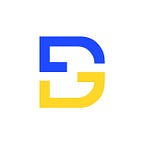The Bullish Case for the Pocket Network
The Pocket Network, a blockchain data ecosystem for Web3 applications, is a platform built for applications that use low-cost economics to gather and distribute data at scale.
With Pocket, the use of blockchains can be easily integrated into websites, mobile apps, IoT, and more applications that accompany end consumers every day. The Pocket Network has been a part of the DFG portfolio since early 2021 and here are the key features that make us consider it a promising service provider.
Highly promising middleware service provider
The core business of Pocket Network is to provide decentralized data relay services (or RPC services) for developers on various public chains. As a middleware protocol connecting the underlying public chains and upper-layer applications, Pocket Network is a typical Web3 infrastructure project.
At present, underlying public chains have exploded in many sectors of the industry and each one manages a set of features that make them highly relevant for a number of use cases. The next big trend is to realize the interoperability of these public chains. As a result, middleware projects will usher in a high-speed growth opportunity. Pocket Network has been laying out the Web3 middleware track since 2017. The project’s core team have built a complete underlying network, full-node incentive, and Web3 application decentralized data acquisition solutions, providing Web3 infrastructure and upper-layer applications with decentralization as the core. The coordination layer.
The Pocket Network protocol has a wide range of real application scenarios. Whether it is a decentralized protocol based on smart contracts or centralized service providers such as trading platforms, market aggregators, and data websites, they need to continuously request the corresponding on-chain data to ensure the normal operation of their business. The data relay service provided by Pocket Network is the bridge between applications, users, and blockchain, and it is also one of the Web3 middleware services with the largest and busiest relay volume. With the continuous growth of the blockchain application space, the demand for data relays will increase.
Prominent Advantages over Competitors
With decentralized and flexible features, Pocket Network surpasses its competitors, like Infura and Alchemy, in cost and performance. Pocket’s team has proposed a decentralized design to provide services to avoid centralization-associated risks, such as single point failure. By doing this, Pocket Network will become more sustainable and reliable. Infura suffered a serious failure in November 2020, affecting a large number of DeFi applications and trading platforms. However, there were no failure records for Dapps using Pocket Network services at that time.
Compared to centralized service providers, Pocket provides a more flexible, low-cost alternative for Web3 users. Pocket Network’s node operators are geographically distributed, making it possible to simultaneously provide RPC relays for multiple blockchains. In terms of cost, the demand-side only needs to pay for the relays they want to use, and the supply-side can increase/decrease the number of its nodes according to the overall market demand. Finally, there are no payment intermediaries between developers and node operators. These factors combine to make Pocket Network less expensive to use.
In the long run, as a new decentralized middleware protocol, the Pocket Network will gradually replace traditional centralized service providers. In the old model, the middleware gets value from its users but the new model does the opposite. New models such as Pocket Network will create value for users.
Strong Business Scalability
In addition to the novel product concept, Pocket Network also pays attention to the composability of the protocol, enhancing its inclusiveness with other middleware protocols. It aims to better serve DApp application developers, and reduce the cost of data acquisition over the DApp development life cycle.
Each middleware protocol, or “infrastructure legos for DApp”, provides specific stack solutions for DApp development at different layers. For example, The Graph is an indexing layer, while Arweave is a storage layer, Akash is a cloud layer, and Livepeer a video transcoding layer. Pocket is an RPC layer, providing on-chain data services to DApps.
To demonstrate its composability with other middleware protocols, Pocket incentives developers to build projects that integrate The Graph and Pocket. For example, ERCgraph-a ERC20 transfer data graph can use Pocket Network for inquiring about on-chain ERC20 data while asking The Graph for index information from pools like Uniswap and Balancer.
Figure 3: Overview of Pocket’s Ecosystem
Fast Growing User Base
Even though it is competitive to attract users from using centralized API service providers, Pocket Network has cooperated with many industry leaders like Saturn Network, an uncensorable decentralized exchange (DEX) protocol, adopting Pocket Mainnet relay infrastructure since August.
Pocket Network is also working with MetaMask and MyCrypto allowing users to enable decentralized Ethereum API requests through Pocket Gateway. They have an agreement with ETHOnline and ETH Global to be an official default network provider for their hackathons. The Arcadia Group will also implement Pocket as a core element within its exchange development stack.
Summary
Pocket Network has processed almost 20 billion relays since August 2021, achieving a remarkable 100x increase in its daily relays within one year. Currently, there are more than 25k+ staked nodes and 2000+ staked Apps running across the globe, ensuring network decentralization.
Harmony, Ethereum, and FUSE ranked top 3 in terms of chain relay demands, while c0d3r, blockspaces and nachoracks dominated the top 3 in terms of node runner earnings. The on-chain data demonstrated that the Pocket Network develops at a fast-growing pace, with more relays and active node participation, additionally, it will create an open and economic-friendly data relay market that facilitates the development of Web3.
